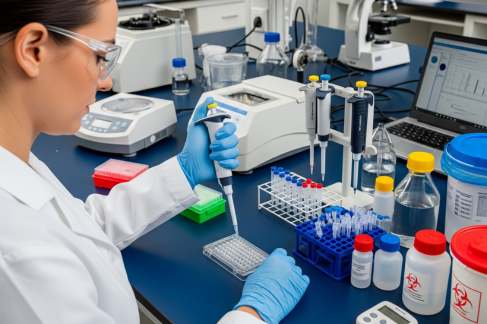Blood vessels are tubular structures that form a complex network throughout the body. Three primary types of blood vessels are arteries, veins, and capillaries. They are responsible for blood transportation to and from the heart, organs, and tissues. They also deliver oxygen and nutrients to all parts of the body. They remove waste products to maintain proper body function.
However, oxidative stress, inflammation, high blood pressure and cholesterol, diabetes, smoking, obesity, age, and exposure to environmental toxins can disrupt the normal functions of blood vessels. As a result, our organs don’t get a proper blood supply. This further leads to tissue damage and increases the risk of cardiovascular diseases. This condition is known as vascular dysfunction.
Key symptoms of vascular dysfunctions are:
- Endothelial dysfunction: It occurs when the inner lining of blood vessels loses its ability to dilate properly.
- Impaired vasodilation: In this condition, blood vessels can’t relax properly, which leads to high BP.
- Increased inflammation: When blood vessels become more prone to inflammatory responses.
- Thrombosis risk: This increases the tendency of clot formation.
Since all these symptoms can be life-threatening diseases, such as stroke, hypertension, and atherosclerosis, it is crucial to diagnose them early. Here is where the TXA2 rat ELISA kit comes into play.
What is TXA2 ELISA?
Vascular dysfunction can disrupt the balance of vasodilators, like nitric oxide, and vasoconstrictors, like TXA2. TXA2 is a bioactive lipid derived from arachidonic acid via the cyclooxygenase (COX) pathway. It boosts platelet aggregation and vasocontriction to prevent blood loss after injury.
Excess TXA2 can lead to vascular dysfunction by boosting clot formation, narrowing blood vessels, and boosting inflammation.
So, it acts as a biomarker in vascular dysfunction. Researchers use TXA2 rat ELISA kits to measure the amount of TXA2 in a sample.
Note: TXA2 is an unstable compound and has a shorter lifespan. So, it hydrolyzes to a stable compound – TXB2. By measuring the amount of TXB2, scientists can indirectly measure the amount of TXA2 using ELISA kits.
These kits are known for their:
- High sensitivity and specificity
- Cost-effectiveness
- Versatility and scalability
- Reproducible and accurate results
Role of TXA2 Rat ELISA Kit in Vascular Dysfunction Research
Study Platelet Function and Blood Clotting
Platelets are small cells in the blood that help form clots when a blood vessel is injured. TXA2 activates platelets and makes them stick together. This is helpful for stopping bleeding, but too much TXA2 can lead to dangerous clots that block blood flow.
Using the TXA2 Rat ELISA Kit, researchers can study how platelets behave under different conditions. They can see if platelets are overactive or if clotting is abnormal. This is important for understanding diseases like thrombosis, heart attacks, and stroke. It also helps scientists test medicines that prevent or reduce clot formation.
Monitor Vascular Inflammation
Inflammation in blood vessels can damage the vessel walls and worsen vascular dysfunction. High TXA2 levels contribute to inflammation. With the TXA2 Rat ELISA Kit, researchers can monitor TXA2 as a marker of inflammation. They can see how treatments affect TXA2 and whether they reduce inflammation. This is especially useful when testing anti-inflammatory drugs or therapies for vascular diseases.
Evaluate Drug Efficacy
New drugs targeting vascular problems are often designed to reduce TXA2 levels or block its effects. The TXA2 rat ELISA kit provides precise measurements that show whether a drug is working. Scientists can compare TXA2 levels before and after treatment. If levels decrease, it indicates the therapy is effective. This makes the kit very important in preclinical studies and drug development.
Understand the Mechanisms of Vascular Dysfunction
Vascular dysfunction can be caused by many factors, including high blood pressure, diabetes, aging, smoking, and oxidative stress. TXA2 plays a central role in these processes. By measuring TXA2, researchers can understand how these risk factors affect blood vessels at a molecular level.
For example, in diabetes, high blood sugar can increase TXA2 production, leading to abnormal clotting and inflammation. In hypertension, excess TXA2 can worsen vessel constriction. The ELISA kit helps researchers study these pathways and find targets for treatment.
Support Preclinical Research
The TXA2 rat ELISA kit is widely used in animal models, especially rats, to study vascular dysfunction before human trials. It helps scientists test hypotheses, evaluate therapies, and understand disease progression. The kit’s sensitivity and accuracy make it reliable for repeated measurements, which is crucial in long-term studies.
The Bottom Line
The TXA2 rat ELISA kit is a simple and reliable tool for studying vascular dysfunction. It helps measure TXA2, a key molecule that affects blood clotting, vessel narrowing, and inflammation.
By tracking TXA2 levels, researchers can understand how blood vessels are working, test new drugs, and study disease mechanisms. This kit plays a vital role in early diagnosis, therapy evaluation, and preclinical research. Overall, it supports scientists in finding better ways to prevent and treat vascular diseases.

